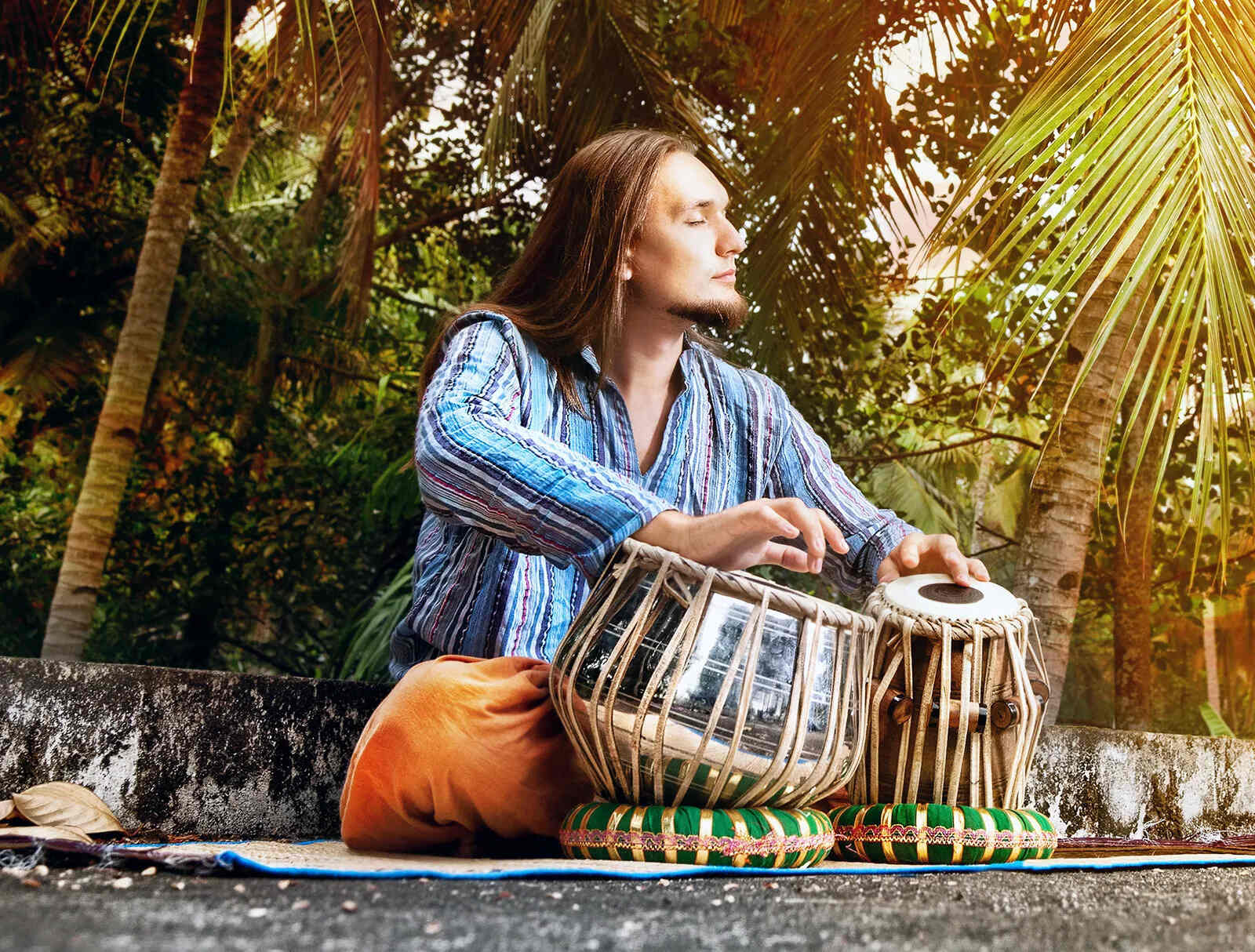
Tabla is a traditional Indian percussion instrument known for its rich history and unique sound. Originating from the Indian subcontinent, it consists of two drums: the smaller dayan and the larger bayan. These drums are played with fingers and palms, producing a wide range of tones. Tabla has been an integral part of Indian classical music, accompanying both vocal and instrumental performances. Its intricate rhythms and patterns require years of practice to master. The instrument's versatility allows it to blend seamlessly with various music genres, from classical to contemporary. Whether you're a music enthusiast or a curious learner, these 25 facts about Tabla will deepen your appreciation for this fascinating instrument.
The Origins of Tabla
The tabla is a fascinating percussion instrument with a rich history. Let's dive into some intriguing facts about this iconic instrument.
-
Ancient Roots: The tabla's origins trace back to ancient India, with references found in texts dating as far back as the 13th century.
-
Inventor: Legend credits Amir Khusro, a 13th-century poet and musician, with inventing the tabla by splitting a single drum into two.
-
Name Meaning: The word "tabla" comes from the Arabic word "tabl," meaning drum.
Construction and Design
Understanding the tabla's construction helps appreciate its unique sound and versatility.
-
Two Drums: The tabla consists of two drums— the smaller "dayan" and the larger "bayan."
-
Materials Used: Traditionally, the dayan is made of wood, while the bayan is crafted from metal, usually brass or copper.
-
Animal Skin: The drumheads are made from goat or cow skin, contributing to the tabla's distinctive sound.
-
Syahi: The black spot in the center of the drumhead, called "syahi," is made from a mixture of rice paste, iron filings, and other materials, enhancing tonal quality.
Playing Techniques
The tabla's playing techniques are as intricate as its construction.
-
Bol System: Players use a system of mnemonic syllables called "bols" to represent different strokes and sounds.
-
Finger Dexterity: Mastering the tabla requires exceptional finger dexterity and control.
-
Hand Position: The dayan is played with the right hand, while the bayan is played with the left, allowing for a wide range of sounds.
Cultural Significance
The tabla holds a special place in Indian culture and music.
-
Classical Music: It is a staple in Hindustani classical music, providing rhythmic accompaniment to various instruments and vocal performances.
-
Folk Music: The tabla is also prevalent in Indian folk music, adding rhythm to traditional songs and dances.
-
Religious Ceremonies: Often used in religious ceremonies and rituals, the tabla's rhythmic patterns enhance spiritual experiences.
Famous Tabla Players
Several tabla maestros have gained international acclaim for their skill and contributions to music.
-
Zakir Hussain: One of the most renowned tabla players, Zakir Hussain has brought global recognition to the instrument.
-
Alla Rakha: A legendary figure, Alla Rakha was known for his collaborations with sitar virtuoso Ravi Shankar.
-
Anindo Chatterjee: Anindo Chatterjee is celebrated for his technical prowess and innovative playing style.
Tabla in Modern Music
The tabla's versatility extends beyond traditional Indian music.
-
Fusion Music: It has found a place in fusion music, blending with genres like jazz, rock, and electronic music.
-
Film Scores: Many Bollywood and Hollywood film scores feature the tabla, adding a unique rhythmic element.
-
Collaborations: Tabla players often collaborate with artists from different musical backgrounds, creating cross-cultural musical experiences.
Learning the Tabla
Learning to play the tabla is a rewarding journey that requires dedication and practice.
-
Guru-Shishya Tradition: Traditionally, tabla is taught through the guru-shishya (teacher-student) tradition, emphasizing personal mentorship.
-
Practice Routine: Regular practice, known as "riyaz," is essential for developing skill and mastery.
-
Notation System: Tabla music is often written in a unique notation system that represents different bols and rhythmic patterns.
Fun Facts
Here are some fun and lesser-known facts about the tabla.
-
Weight: Despite its small size, the bayan can weigh up to 10 kilograms due to its metal construction.
-
Tuning: The dayan is tuned to the tonic note of the musical piece, while the bayan's pitch can be altered by applying pressure with the palm.
-
Global Influence: The tabla's influence has spread worldwide, with tabla schools and enthusiasts found in many countries outside India.
The Rhythm of Tabla
The tabla isn't just an instrument; it's a bridge between cultures, a keeper of traditions, and a source of joy. From its origins in ancient India to its influence on modern music, the tabla has a rich history and a vibrant present. Whether you're a seasoned musician or just curious about different instruments, the tabla offers a world of rhythm and melody to explore. Its unique sound and playing techniques make it stand out in any musical setting. So next time you hear the rhythmic beats of a tabla, remember the centuries of craftsmanship, innovation, and passion that have gone into making this instrument what it is today. Dive into the world of tabla, and let its beats inspire you.
Was this page helpful?
Our commitment to delivering trustworthy and engaging content is at the heart of what we do. Each fact on our site is contributed by real users like you, bringing a wealth of diverse insights and information. To ensure the highest standards of accuracy and reliability, our dedicated editors meticulously review each submission. This process guarantees that the facts we share are not only fascinating but also credible. Trust in our commitment to quality and authenticity as you explore and learn with us.
